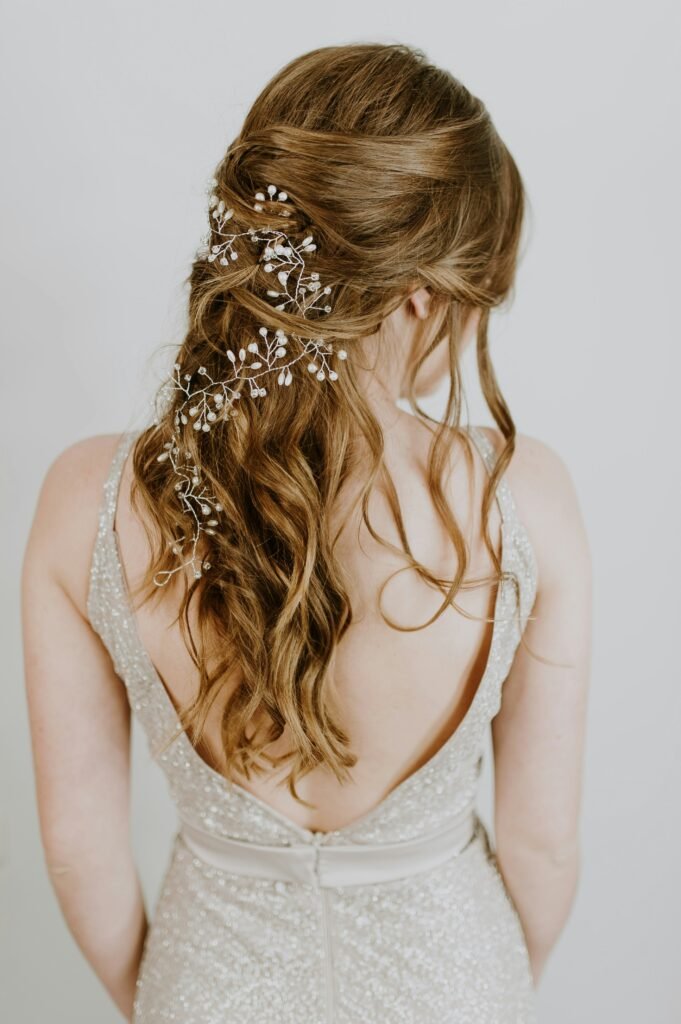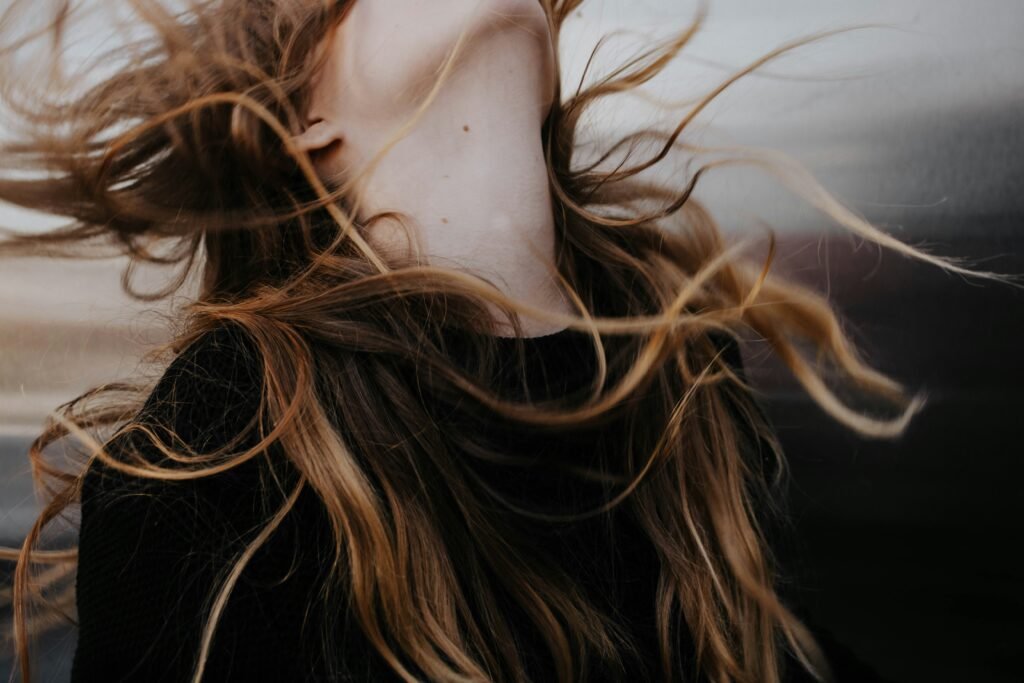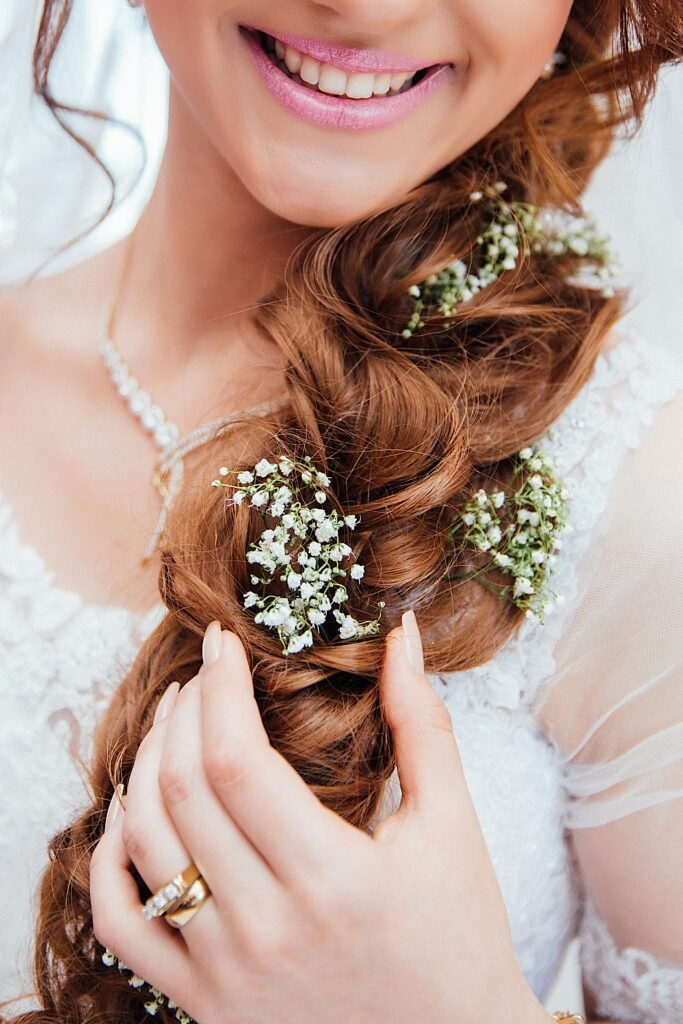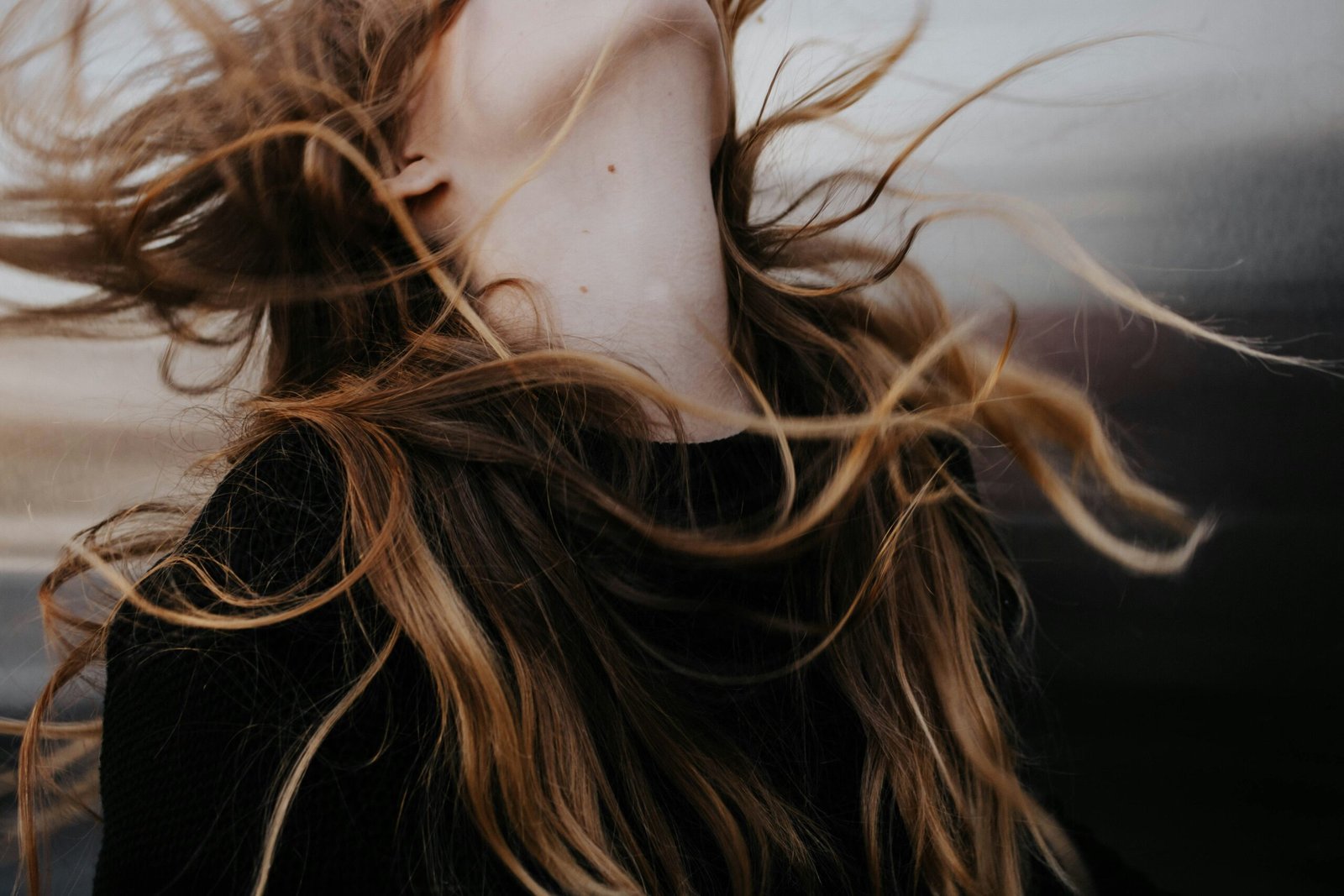Are you tired of struggling with dull, lifeless weave hair? Look no further! The world of hair care has evolved, and cutting-edge treatments for weave hair are here to transform your tresses. Say goodbye to frizz, dryness, and breakage, because these innovative techniques are designed to give you the lustrous, healthy locks you’ve always dreamed of. From advanced texturing methods to nourishing treatments, discover the secrets to achieving flawless weave hair that will make heads turn. Get ready to embrace a new level of hair confidence with these game-changing innovations.
Hair Extension Techniques
When it comes to hair extensions, there are various techniques available that cater to different preferences and needs. Let’s explore some of the most popular methods:

This image is property of images.unsplash.com.
1.1 Tape-In Extensions
Tape-in extensions are a fantastic option for those seeking a quick and easy way to add length and volume to their hair. This technique involves attaching wefts of hair to your natural hair using double-sided tape. The application process is straightforward and doesn’t require any heat or chemicals. Tape-in extensions are also known for being comfortable to wear and causing minimal damage to your natural hair.
1.2 Fusion Extensions
Fusion extensions, also known as hot fusion or keratin bond extensions, are a long-lasting and versatile hair extension method. This technique involves bonding individual strands of hair to your natural hair using keratin glue. Fusion extensions offer a seamless and natural look, as the keratin bonds are virtually undetectable. They are a popular choice for those looking for a more permanent hair extension solution.
1.3 Micro Link Extensions
Micro link extensions, also called micro bead or micro ring extensions, are a great option for individuals who want to avoid any adhesive or heat during the extension process. This technique involves attaching small metal beads or rings to your natural hair, and then securing the hair extensions to the beads using silicone-lined micro links. Micro link extensions offer flexibility and can be easily adjusted and moved up as your natural hair grows.
1.4 Sew-In Extensions
Sew-in extensions, also referred to as weave extensions, are a classic and popular method that involves sewing hair wefts onto braided tracks created with your natural hair. This technique can provide a secure and long-lasting result. Sew-in extensions offer versatility, as they can be styled in various ways without causing damage to your natural hair. However, it’s essential to ensure that the tracks are properly done to prevent any discomfort or damage to your scalp.
Scalp Treatments
Taking care of your scalp is crucial for maintaining healthy hair. Here are some scalp treatments that can help improve the overall health and condition of your scalp:
2.1 Scalp Exfoliation
Scalp exfoliation is a process that involves removing dead skin cells, excess oil, and product buildup from your scalp. This treatment promotes a healthy scalp environment, which can ultimately lead to stronger and healthier hair growth. Scalp exfoliation can be done using exfoliating scrubs or brushes designed specifically for the scalp. Regular exfoliation helps unclog hair follicles, stimulates blood circulation, and promotes a clean and balanced scalp.
2.2 Scalp Massage
Scalp massage is a relaxing and beneficial treatment for your scalp and hair. Massaging your scalp helps improve blood circulation, which can nourish the hair follicles and promote hair growth. It also helps relieve stress and tension, which can contribute to healthier hair. You can perform a scalp massage using your fingertips or invest in a scalp massager tool for added convenience. Apply gentle pressure and circular motions to stimulate the scalp and enjoy the soothing effects of this treatment.
2.3 Scalp Serums
Scalp serums are specialized treatments designed to target specific scalp concerns. These serums often contain ingredients that nourish and hydrate the scalp, promote hair growth, and soothe any irritation or inflammation. Scalp serums are typically applied directly to the scalp and massaged in for maximum absorption. Regular use of scalp serums can help maintain a healthy scalp, reduce hair shedding, and improve the overall condition of your hair.
Protein Treatments
Protein treatments are a vital part of maintaining the strength and integrity of your hair. These treatments help repair and strengthen damaged or weakened hair strands. Let’s explore some common protein treatment options:
3.1 Keratin Treatments
Keratin treatments are popular protein treatments that help restore and rebuild the protein structure of the hair. They often involve the application of a keratin-rich formula onto the hair, which is then sealed in using heat. Keratin treatments can help improve hair strength, reduce frizz, and enhance overall manageability. They are particularly beneficial for those with chemically treated or excessively damaged hair.

This image is property of images.unsplash.com.
3.2 Collagen Treatments
Collagen treatments are another effective protein treatment option. Collagen is a protein that supports hair health, improves elasticity, and enhances moisture retention. Collagen treatments infuse the hair with this essential protein, helping to repair and strengthen the hair shaft. These treatments are suitable for all hair types and can bring life back to dry, brittle, or weak hair.
3.3 Hydrolyzed Protein Treatments
Hydrolyzed protein treatments are formulated with proteins that have been broken down into smaller fragments called peptides. These smaller proteins can penetrate deeply into the hair shaft, providing intense nourishment and repair. Hydrolyzed protein treatments are excellent for repairing damaged hair, reducing breakage, and improving overall hair health. They can be especially beneficial for those with chemically treated or heat-damaged hair.
Moisture Treatments
Maintaining proper moisture balance is essential for healthy and lustrous hair. Here are some moisture treatments that can help nourish and hydrate your hair:
4.1 Deep Conditioning Masks
Deep conditioning masks are intensive treatments that provide deep hydration and nourishment to your hair. These masks are formulated with rich, emollient ingredients that penetrate the hair shaft to repair dryness, damage, and brittleness. Deep conditioning masks should be applied to clean, damp hair and left on for a specified period, allowing the ingredients to work their magic. Regular use of deep conditioning masks can restore moisture, improve hair elasticity, and leave your locks looking shiny and healthy.
4.2 Hydrating Hair Oils
Hydrating hair oils are excellent tools for adding moisture and shine to your hair. These oils often contain natural ingredients such as argan oil, coconut oil, or jojoba oil, which are known for their hydrating properties. Hair oils can be applied to damp or dry hair and worked through the lengths and ends. They help seal in moisture, reduce frizz, and add a lustrous sheen to your hair. Hydrating hair oils are perfect for daily use or as a pre-shampoo treatment to nourish and rejuvenate your locks.
4.3 Leave-In Conditioners
Leave-in conditioners are lightweight formulations designed to be left in your hair without rinsing. These products provide continuous moisture throughout the day, keeping your hair hydrated and manageable. Leave-in conditioners can be applied to damp or dry hair and should be evenly distributed through the lengths and ends. They help detangle hair, add moisture, protect against environmental damage, and provide an extra layer of nourishment to your locks. Leave-in conditioners are particularly beneficial for those with dry or damaged hair.
Heat-Free Styling Methods
Using heat to style your hair can lead to damage and breakage over time. Fortunately, there are heat-free styling methods that allow you to achieve beautiful curls and waves without exposing your hair to excessive heat. Let’s explore some popular heat-free styling techniques:
5.1 Flexi Rods
Flexi rods are flexible, foam-based rods that are used to create curls and waves. They are easy to use and gentle on your hair, as they require no heat. To achieve curls with flexi rods, simply wrap sections of damp hair around the rods and secure them in place. Leave them overnight or allow them to air dry completely. Once removed, you’ll be left with stunning, heat-free curls or waves that can last for days.
5.2 Bantu Knots
Bantu knots are a versatile heat-free styling method that can create a range of gorgeous looks. To create Bantu knots, section your hair and twist each section tightly from root to tip. Wrap the twisted section around itself to create a knot and secure it in place. Repeat this process for all sections of your hair. Leave the knots in overnight or until your hair is completely dry. When unravelled, Bantu knots can result in defined curls or beautiful waves, depending on the hair texture and size of the knots.
5.3 Curlformers
Curlformers are innovative hair styling tools that create spiral or barrel curls without heat. These unique, tubular-shaped rollers are designed to stretch and shape your hair as it dries. To use Curlformers, insert a small section of damp hair into the opening of the roller and pull it through until the hair is fully wrapped around the roller. Repeat this process throughout your hair and allow it to dry completely before removing the Curlformers. The result is stunning, heat-free curls that last.
Lace Closure Techniques
Lace closures are a popular choice for those looking to achieve a natural-looking hairline and part. Here are some techniques to customize and enhance the appearance of lace closures:

This image is property of images.unsplash.com.
6.1 Customization of Lace Closures
Customizing your lace closure can make all the difference in achieving a seamless and natural look. This technique involves tinting the lace to match your scalp and plucking some of the hairs along the hairline to create a more realistic appearance. To customize your lace closure, start by applying foundation or concealer that matches your skin tone to the lace. Gently pluck a few hairs along the hairline, being careful not to create bald spots. This process will help the lace closure blend seamlessly with your scalp and mimic the look of natural hair growth.
6.2 Knot Bleaching and Tinting
Knot bleaching and tinting is another customization method used to improve the appearance of lace closures. The knots of a lace closure can be visible, giving an unrealistic appearance. Knot bleaching involves using a bleaching agent to lighten the knots and make them less noticeable. Tinting, on the other hand, involves applying a colorant to the knots to match your scalp or hair color. These techniques help create a more realistic and natural-looking scalp area, making the lace closure virtually undetectable.
Color Treatments
Changing your hair color can be a fun and exciting way to refresh your look. Here are some popular color treatment options for weave hair:
7.1 Balayage Highlights
Balayage highlights are a technique that creates a soft and natural-looking color effect. This method involves hand-painting or freehand applying color to select sections of the hair, typically focusing on the mid-lengths and ends. Balayage highlights can add depth, dimension, and a sun-kissed appearance to your weave hair. The seamless blend of colors creates a low maintenance, effortlessly chic look.
7.2 Ombre Color
Ombre is a popular color technique that involves a gradual transition from a darker shade at the roots to a lighter shade towards the ends. This color effect creates a visually striking contrast and adds a trendy touch to your weave hair. Ombre color can be customized to suit your preferences, with options ranging from natural or subtle ombre to bold and vibrant combinations. It’s a versatile color treatment that allows you to express your style and creativity.
7.3 Pastel Hair Shades
For those looking to make a bold statement with their weave hair color, pastel shades are a trendy choice. Pastel hair colors, such as soft pinks, lavender, or mint green, can instantly transform your look and add a touch of whimsy. These hues require pre-lightening the hair before applying the pastel shade for maximum impact. Pastel hair shades are a fantastic way to showcase your individuality and experiment with fun, vibrant colors.
Wig Care and Maintenance
Proper care and maintenance are essential to keep your wigs looking their best and ensure their longevity. Let’s explore some tips for wig care:
8.1 Proper Washing and Conditioning
Washing and conditioning your wig is crucial for maintaining its cleanliness and quality. Use a wig-specific shampoo and conditioner to ensure gentle and effective cleansing. Fill a basin with cold water and add the shampoo. Immerse the wig and gently swirl it around, making sure all strands are clean. Rinse thoroughly and apply the conditioner, focusing on the mid-lengths and ends. Rinse again and gently squeeze out excess water. Allow the wig to air dry on a wig stand or a form to maintain its shape.
8.2 Wig Storage Techniques
Proper storage is crucial to prevent tangling, damage, and maintain the shape of your wig. Store your wig on a wig stand or a form to ensure it retains its style and shape. Avoid storing wigs in direct sunlight, as prolonged exposure to UV rays can cause discoloration. Keep your wigs away from excessive heat sources and store them in a cool, dry place. If you’re traveling, consider investing in a wig storage bag to protect your wig from damage.
8.3 Refreshing Wig Styles
Over time, wigs can lose their style and become dull. To refresh the style of your wig, use heat-free methods such as wet styling or setting techniques. Wet styling involves spraying the wig with water or a wig-specific styling spray and manipulating the hair into the desired style. Setting techniques, such as using flexi rods or rollers, can also help rejuvenate the wig’s curls or waves. Avoid using excessive heat on synthetic wigs, as it can cause damage. Follow manufacturer guidelines for styling and refreshing your wig.
Hair Loss Solutions
Hair loss can be a distressing experience, but there are solutions available to help address this issue. Here are two hair loss treatment options:
9.1 Non-Surgical Hair Restoration
Non-surgical hair restoration methods offer a non-invasive approach to address hair loss. These treatments typically involve the use of low-level laser therapy (LLLT) devices that emit red light wavelengths. The red light stimulates blood circulation, encourages hair growth, and helps rejuvenate hair follicles. Non-surgical hair restoration treatments can be done at home with handheld devices or through professional clinics. It’s important to consult a hair restoration specialist to determine the most suitable treatment for your specific needs.
9.2 PRP Therapy for Hair Regrowth
Platelet-rich plasma (PRP) therapy is a hair regrowth treatment that utilizes the healing properties of your blood to stimulate hair growth. The process involves drawing a small amount of your blood and processing it to extract the platelet-rich plasma. The concentrated plasma, rich in growth factors, is then injected into the scalp to promote hair regrowth and improve the thickness and density of existing hair. PRP therapy is a safe and effective treatment option for those experiencing hair loss or thinning.
Post-Weave Haircare
After removing a weave, it’s essential to care for your natural hair properly. Here are some post-weave hair care tips:
10.1 Detangling Techniques
Detangling your hair after removing a weave is crucial to prevent breakage and minimize shedding. Start by gently finger detangling your hair, removing any large knots or tangles with your fingers. Then, use a wide-toothed comb or a detangling brush to carefully comb through your hair from ends to root, working in small sections. Applying a leave-in conditioner or a detangling spray can help ease the process and provide extra moisture and slip.
10.2 Moisturizing and Sealing
Moisturizing your hair is essential after removing a weave to restore hydration and maintain the health of your natural strands. Apply a deep conditioning treatment or a moisturizing mask to replenish moisture and nourish your hair. After rinsing out the conditioner, seal the moisture in by applying a leave-in conditioner or a lightweight hair oil to lock in hydration. Focus on the ends of your hair, where it may be more prone to dryness and damage.
10.3 Protective Styling
Protective styling is crucial for minimizing damage and promoting hair growth after removing a weave. Embrace styles that tuck away your ends and protect your hair from external factors, such as braids, twists, or buns. These hairstyles can help reduce manipulation, prevent breakage, and support hair growth. Remember to avoid styles that pull too tightly on your edges or scalp to prevent tension or traction alopecia.
In conclusion, there are numerous cutting-edge treatments and techniques available to enhance and care for weave hair. Whether you’re looking to add length and volume with extensions, improve scalp health, maintain protein and moisture balance, or experiment with color, there is a treatment or technique that suits your needs. Remember to consider your hair type and condition when selecting the appropriate treatments and always consult with a professional stylist or hair care expert for personalized advice and guidance. With the right care and treatments, your weave hair can remain healthy, vibrant, and beautiful.
